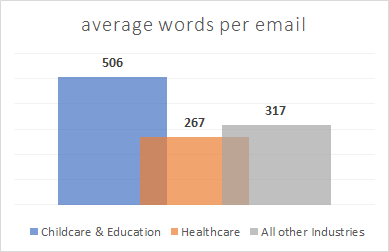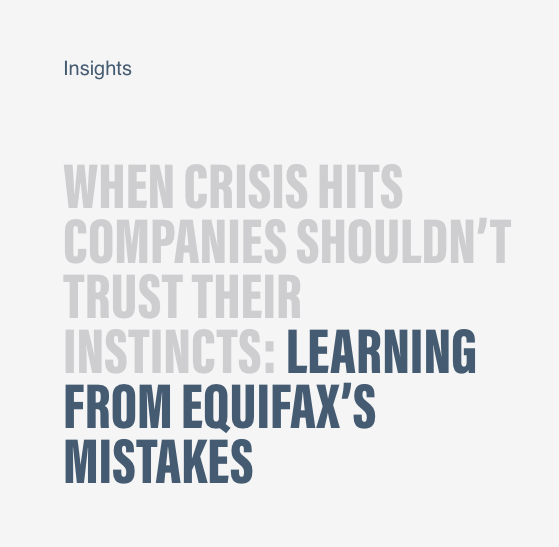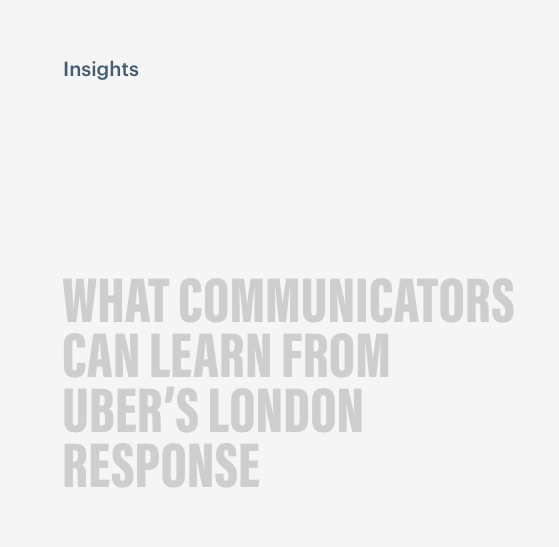We analyzed over 150 Coronavirus Emails
Here’s what we found.

In the past few weeks, public spaces have closed their doors, hand sanitizer and toilet paper have flown off the shelves, and global travel has slowed or stopped as restrictions went into place. But while shelves are empty, our inboxes are fuller than ever as companies and organizations attempt to communicate about the outbreak.
Some try to be helpful by providing critical information, like airline status updates or school closures. Some try to reassure the public by detailing cleaning protocols and reminding us of steps we can take to stay healthy. Others just seem to be looking for an excuse to show up in our inboxes.
As a company, it can be difficult to decide whether to say anything at all during times of global uncertainty. Organizations have the ability to calm the public or share vital information, but missing the mark can waste the public’s time or make a bad situation worse.
Faced with such an unprecedented moment for language, we set out to learn more about how organizations are communicating about coronavirus. We pulled together a database of over 150 emails from February 28 through March 12, and used text analysis software to extract patterns and themes (check out the full database of emails here).
Sourcing emails from our staff, our family, and our friends, the result is a snapshot of coronavirus communications that, while not wholly representative, provides a broad overview of the different ways companies are talking about this challenge. Our analysis led us to a few major takeaways for companies grappling with how to communicate through this difficult time
3 Lessons for COVID-19 Messaging
Beware the bandwagon effect.
The first few companies to send out effective communications about coronavirus got credit for being timely and proactive. But as more and more organizations throw their hats into the ring, the bar has been raised. Repeating the same information won’t get you far — at best, customers will ignore you. Think hard about the value of what you have to say. If you don’t have mission-critical information to communicate, your audience doesn’t want to hear it right now.
Before you say anything, take a look at your organization, your role, and your audience and ask yourself the following questions:
- Do I fit into this space?
- Can I offer something to make the lives of those affected easier?
- Is there a critical update that my audience needs to know about?
If the answer to these questions is no, then it’s likely the best move is to not say anything at all. In this environment, it’s easy to come across as opportunistic when it’s not clear you have a role to play.
Remember to stay in your lane.
Right out of the gate, most organizations are setting a tone of continuous monitoring and action by calling their emails updates, which creates the sense that what follows is part of an ongoing communication. But is this actually new information for your audience? And if so, should it come from you?
People’s concerns around coronavirus can (broadly) be bucketed into 2 narratives: safety and transparency.
- Addressing Safety: Unless you’re in healthcare and you can offer new information on how consumers can stay safe, keep statements about safety short and focused on logistics. Tell customers you’re closing stores, not to wash their hands.

- Addressing Transparency: This is where you really have a chance to contribute. Right now, a lot of people feel like they’re not getting the full picture. When people are confronted with uncertainty, they will almost always interpret it negatively. Get ahead of this by letting them know that you’re committed to sharing new information with them as soon as you have it. Give them a specific place to go when they want to find updates, like a micro-site, blog, or app.
Spotlight: Yoga & Wellness
With their focus on personal wellness and spiritual health, Yoga & Wellness companies risk coming across as out-of-touch if communications strike the wrong tone. Yoga & Wellness companies were more likely to use a blend of optimism, humor, and encouragement in their emails, but in some cases actually seemed to present their services as a way to prevent contracting the virus. We can do better than this — yoga may cleanse the spirit, but coronavirus isn’t spreading through spirit-to-spirit contact.
- 19.6% more likely to use the term “encourage”
- 27% of wellness/yoga emails used emojis, compared to 2.5% overall
- The most frequent signature/sign-off was “namaste”

If you HAVE to say something: contribute, don’t capitalize.
Each email that lands in someone’s inbox is likely just one of dozens related to coronavirus. Most messages we analyzed repeated the same set of recommendations from the CDC, including hand-washing (which holds a slight edge in mentions over hand sanitizer) and avoiding close contact.


Consider where you fit in here and whether you have something unique to contribute. If you’re a healthcare organization, it makes sense to include hygiene recommendations. This is relevant to your industry and people are looking to you as a credible source for this kind of information. Similarly, if you’re in food service, share a point or two about the extra steps you’re taking to sanitize your kitchens or enable customers to order virtually. Nobody needs their bank to tell them to wash their hands. But they might appreciate a reminder of ways to manage funds remotely until they can leave their homes again.
Above all, make your communications useful. Don’t turn this into an attempt to sell something or remind your audience how much they need your services. If you have to talk about discounts, sales, or buying opportunities, be empathetic: your promotions should be about helping all customers get the goods and services they need to get through this difficult time.
By the Numbers:
Here are a few additional top-line trends we noticed — by the numbers (you can also access the full database of emails we collected).

The average statement we reviewed was about 321 words long. Emails from childcare and educational institutions were about 50% longer than average, often because of an added emphasis on building community and shared purpose.










